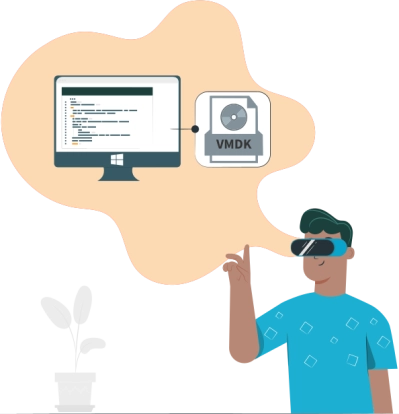
In the realm of virtualization, the Virtual Machine Disk Format (VMDK) stands as a cornerstone for storing virtual machine (VM) disk images. As one of the most prevalent disk image formats, understanding VMDK is essential for anyone involved in managing virtualized environments. This article aims to demystify VMDK, shedding light on its significance, structure, and applications in the world of virtualization.
What is VMDK?
VMDK is a file format developed by VMware, a pioneer in virtualization technology. It serves as the standard container for storing virtual disks used by VMware’s suite of virtualization products, including VMware vSphere, VMware Workstation, and VMware Fusion. Essentially, a VMDK file represents a virtual hard disk drive (HDD) that contains the operating system, applications, and data of a virtual machine.
Structure of a VMDK File
A VMDK file consists of multiple components, each playing a crucial role in defining the characteristics and behavior of the virtual disk:
- Header: At the beginning of the VMDK file resides the header, which contains metadata about the disk, including its format version, size, geometry, and disk descriptor information.
- Descriptor File: The descriptor file provides detailed information about the disk, such as its type (e.g., monolithic or split), disk adapter type, disk geometry, and other parameters essential for the VM’s configuration.
- Data Blocks: The bulk of the VMDK file comprises data blocks that store the actual content of the virtual disk, including the operating system files, application binaries, and user data. These blocks may be stored in various formats, such as monolithic or split, depending on the configuration.
Types of VMDK Disks
VMDK supports different types of virtual disks, each tailored to specific use cases and performance requirements:
- Monolithic: In a monolithic VMDK, all disk data is stored within a single file. This simplicity makes monolithic disks easy to manage but may pose challenges in scalability and performance for large VMs.
- Split: Split VMDKs divide the disk data into multiple smaller files, typically with a maximum size limit per file. This approach facilitates better scalability and flexibility, especially for large VMs with expansive disk space requirements.
Applications and Benefits
VMDK plays a crucial role in enabling the virtualization of IT infrastructure, offering several benefits:
- Resource Optimization: By abstracting physical hardware into virtual disks, VMDK allows for efficient resource utilization, enabling organizations to consolidate multiple VMs on a single physical server.
- Flexibility and Mobility: VMDKs provide portability and flexibility, allowing VMs to be easily migrated or replicated across different VMware environments or cloud platforms.
- Snapshot and Cloning: VMDK supports snapshot and cloning features, enabling administrators to create point-in-time copies of virtual disks for backup, testing, or rapid deployment purposes.
Conclusion
As a fundamental component of VMware’s virtualization ecosystem, the Virtual Machine Disk Format (VMDK) plays a pivotal role in enabling the creation, management, and mobility of virtual machines. By understanding the structure, types, and applications of VMDK, IT professionals can leverage its capabilities to optimize resource utilization, enhance flexibility, and streamline virtual infrastructure management in modern data centers and cloud environments.